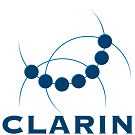Leesbaarheid
Leesbaarheid beoordelen
Hoe moet leesbaarheid beoordeeld worden? In deze demo is het mogelijk om de leesbaarheid van tien teksten te beoordelen door ze met elkaar te vergelijken. Het idee is dat er een absolute score aan alle teksten wordt verbonden - tussen 0 (makkelijk) en 100 (moeilijk) - inclusief een motivatie van de score, waarvoor een vrij tekstvak voor kan worden gebruikt.
- Informatie
- De Clercq, Orphée and Véronique Hoste. 2016. All Mixed Up? Finding the Optimal Feature Set for General Readability Prediction and its Application to English and Dutch. Computational Linguistics, Association for Computational Linguistics, 42(3):457-490.
- Demo
Klassieke formules
In deze demo kan een Nederlandse tekst worden ingevoerd van maximaal 1.000 tekens. Vervolgens wordt de tekst geanalyseerd: verscheidene tekstkenmerken (woordlengte, zinslengte, TTR, ...) worden teruggegeven en verschillende scores worden berekend op basis van klassieke leesbaarheid formules. In een volgende fase wordt de tekst ook geanalyseerd met een syntactische analyse methode die inzichten biedt in de grammatische complexiteit van de tekst.
- Informatie
- De Clercq, Orphée and Véronique Hoste. 2016. All Mixed Up? Finding the Optimal Feature Set for General Readability Prediction and its Application to English and Dutch. Computational Linguistics, Association for Computational Linguistics, 42(3):457-490.
- Demo
Machine learning
The demo will process your text by deriving various text characteristics or features and predict a readability score using supervised machine learning techniques.
- Information
- De Clercq, Orphée and Véronique Hoste. 2016. All Mixed Up? Finding the Optimal Feature Set for General Readability Prediction and its Application to English and Dutch. Computational Linguistics, Association for Computational Linguistics, 42(3):457-490.
- Demo
T-scan
T-Scan is an analysis tool for Dutch text, mainly focusing on text complexity.
